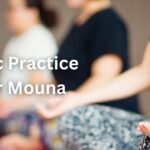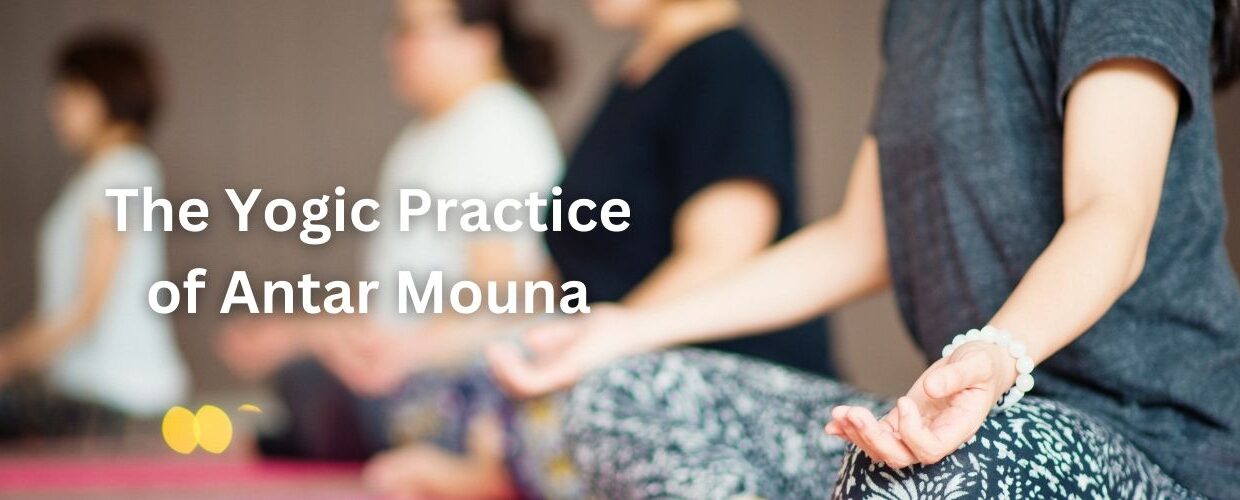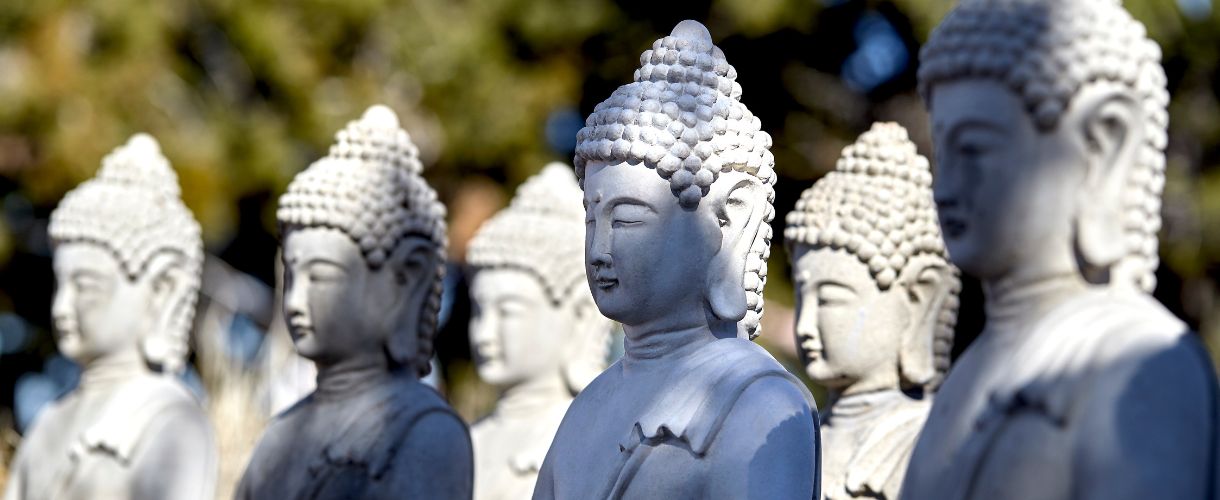
The Yogic Practice of Antar Mouna
October 8, 2024
DIWALI: The Festival of Lights
November 4, 2024HOW TO IMPLEMENT MOUNA IN YOUR DAILY LIFE
Running, restless, in search of some intangible goal,
caught up in some unnecessary activity,
addictions, compulsions, distractions
make us escape into thinking,
making the body feel unsafe
and turning the present moment into an enemy.
At a silent meditation retreat, when you slow down, rest, simply do nothing, you face yourself, your buried feelings and all the stuff you were running from: the darkness, gunk, muck, loneliness, aches, boredom, restlessness, blame, shame, the night and emptiness.
It takes courage to stop running, to lean into the storm, to touch the darkness inside with the infinite light of our curious attention, to breathe the addiction to the future, and to be present, and breathe and not know.
We start by proving to ourselves that it is safe to rest, to be still, to do nothing … just for a moment. Safe to think our thoughts and feel our feelings… and not “fix” the moment in any way.
We begin, one moment at a time to digest all the undigested things inside… stay with the sadness for a moment longer; br present with our joy or shame for an instant more… breathe into our anxiety instead of running from it.
We become curious about our discomfort, instead of distracting ourselves with unnecessary food, drink, cleaning, drugs, sex, shopping, internet, thinking, talking, overworking, yoga, seeking, more thinking, rumination, fantasy and false hope. We challenge the core story at the heart of trauma, that the present moment is unsafe, and the body is somehow working against us, and that feelings, sensations or thoughts are dangerous… that stillness and silence equal nonexistence and death… and that we have to “do” something in order to be worthy, and loved and whole.
A silent meditation retreat allows for the yogic practice of antar mouna. Attend silent meditation retreats which are conducted on weekends at Nirvana Wellbeing Retreat Sanctuary every two months (six times a year) where you can have some time for yourself to practice antar mouna.
If you are aiming to do this on your own, you need to inform everyone at work and your family, not to disturb you.
2. Clear Your Mind
Taking a brief meditation break:
– Sit quietly, close your eyes, and focus on your breathing.
– Pay attention to
the spaces, the silences, the pauses,
the gaps between thoughts, words, the breath
the calm that holds the chaos, and spins through this ever-turning world
the invisible screen that holds the light and shade
and the mystery that pervades and permeates everything.
– Turn your attention to who is paying attention to
the spaces, the silences, the pauses,
the gaps between thoughts, words, the breath
the calm that holds the chaos, and spins through this ever-turning world
the invisible screen that holds the light and shade
and the mystery that pervades and permeates everything.
– When you get distracted, just bring your attention back to your breath.
Listen from silence.
Silence doesn’t always need to be filled.
When you’re done, you will feel more positive and patient. That’s just what you need to shift the energy of your day and help you bounce back from stress.
3. Walking Meditation
There is no rush.
There is no ‘better’ moment to get to.
Be present. Be here.
feel your feet on the ground,
your belly rising and falling.
Be open to life all around you.
Wobble, shiver, tremble, shake,
feel more discomfort than you’ve felt for a long while.
But take the step.
Or do not… that’s okay too.
Either way, stand where you stand today.
Feel your feet in contact with the sacred ground.
Your presence sanctifies it.
Don’t numb yourself with the same old stories.
Stumble if you need to. It’s okay. you are held.
Nothing can knock you off your path
when your path is your feet,
when your heart is the road
and your breath in horizons.
4. Yoga Asana
Yoga is a path that is body-centric.
There is a constant information exchange happening in your being. Your nervous system, digestive system, hormonal system, immune system, your felt sense of “self” are all rooted in biochemical, electromagnetic, thermal, and pressure dynamics.
To understand this is to take a new approach to working with your body in yoga. Instead of a mechanistic view of your body as something to maintain in a contrived or artificial way, you can use your body to evolve your understanding of yourself and your potential. You can cultivate this silence in your life, through the practice of Shanti Yoga asanas.
You work with a framework that looks at the body as an information process instead of as a structure. The body (and your uniquely personal experience of it) is the portal into a deeper self-knowing. Your first step is NOT about relaxing or being still or hoping or thinking your body into change, but focusing on your body as an integration of how you process light, sound, and gravity in real time This lends meaning to posture and movement. If the body is at peace and healthy, then you can focus very easily on inner peace.
5. Pranayama and Breath Work
Breath controls, regulates and calms your nervous system.
Whatever is happening right now, for you…
Gentleness will help.
6. The Practice of Yoga Nidra
Yoga Nidra, also known as ‘yogic sleep’.
Yoga Nidra is known for its ability to reduce stress, anxiety, insomnia, and to promote overall well-being. It is a powerful yogic practice that has been designed to promote a state of deep relaxation and inner peace, conducive to healing.
During this practice, you are guided through a systematic method of complete relaxation, which brings you to the edge of sleep, where your body can rest deeply and rejuvenate while your mind remains calm and alert, maintaining full consciousness.
The MP3 ‘Samadhi’ by Shanti Gowans is an excellent practice tool. It is also available as a CD,
7. Silence During Meals
You can also practice the ‘vow of silence’ during meal times, which actually are the ideal time, to focus more on your food and understand the process of ingestion. Here you can stay away from external sources of stimuli while practicing the same, such as TVs or phones.
8. Go Green
Being outdoors in nature can help you feel more calm and balanced. Studies show that time spent in nature also lessens pain, improves your focus, and helps you better connect with others. Go for a walk in the bush for a few hours, if an entire devoted day is not possible.
If you can’t get out as much as you would like, sit next to a window, look at nature photos, or buy a plant. These will help you feel grounded, too.
9. Unplug
A digital detox can also set the scene. You must also silence all the technological devices such as your smartphone, laptop, iwatch, iPod etc. around you. This also allows your brain to slow down so you can better focus. It makes you calmer and lifts your mood. It may take a lot of discipline to put your phone and laptop away, but stare at any screen for hours and you’ll miss what’s going on in real life.
In Conclusion
When you listen to your life,
you see it for the fathomless mystery that it is.
See, listen, touch, taste and smell your way
to the holy and hidden heart of life.
It’s excitement and gladness, boredom and pain
are all key moments in the grace
That is life.






